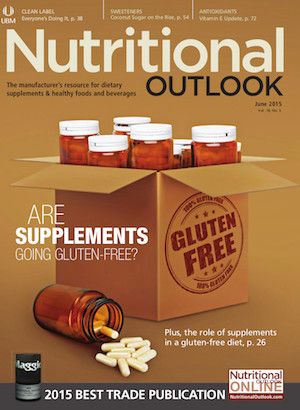What’s Next for Aloe Drinks?
With Aloe vera beverages now stationed in convenience stores and corporate campuses, what’s next for this sweet succulent?

Aloe vera
may have lotions and creams to thank for its fame, but the growing market for aloe beverages suggests consumers are turning to the herbal ingredient for more than just sunburn relief. With those beverages expanding beyond the natural channel to supermarkets, convenience stores, and gas stations, are aloe foods finally going mainstream?
Yes, says Peter Hafermann, president of aloe supplier Improve USA (Anaheim, CA). “Beverages are where the growth is, from our company’s perspective,” he adds.
Over the last three to five years, aloe beverages gradually gained popularity in the natural channel, but often only as unflavored raw aloe juice, according to aloe supplier Aloecorp (Lacey, WA). “It was mostly people were buying just a bottle of juice, raw juice, plain juice, and they would drink two or three ounces of juice every day,” says Jeff Barrie, regional sales manager, Eastern USA, Aloecorp. “Now these single-serve beverages are getting very popular. There’s a lot of interest in it, and there’s a lot of these products on the market.”
According to SPINS (Schaumburg, IL), the U.S. market for functional aloe juices has grown 25.7% over the last year, reaching a value of more than $47 million as of April.
ALO Drink (San Francisco, CA) is one finished product company that has experienced success reaching mainstream consumers. With its flavored, single-serve drinks currently available through retailers such as Chevron, Target, Costco, Safeway, and QuickTrip, ALO has been able to grow beyond natural channels in recent years.
“In Detroit, one of ALO’s best customers is a gas station-traditionally a mainstream, male-dominated, grab-and-go channel,” says Henry Chen, founder of ALO Drink. Chen adds that the convenience/gas channel “has been identified as a significant growth area for our brand.”
Available in 500-ml and 350-ml single-serve bottles, ALO Drink offers flavors such as honey, pomegranate/cranberry, and watermelon/peach. The company also offers blends of coconut water and aloe juice.
Chen claims ALO is gaining popularity on corporate campuses as well and has become “one of the most popular drinks available on the Google campus.” ALO Drink is also available at the campuses of Facebook, Comcast, Sony, and Lucasfilm, says Chen.
Remaining Challenges
But there are still a few obstacles for aloe beverages, including a pulpy texture that many consumers may find unappealing. In response to this, ALO Drink launched its pulp-free line earlier this year, which contains the same Aloe vera content as ALO’s original line, says Chen.
Mislabeling and adulteration of aloe products can also be an issue. Formulators and consumers should look for the monograph of the International Aloe Science Council (IASC) to know they’re getting authentic aloe, says Ken Jones, vice president and COO, Aloecorp.
“Probably the biggest issue right now is not having enough Aloe vera in a product to be efficacious. The IASC requires certain levels-15% minimum-in a product because that’s at least an efficacious level,” says Jones. “If someone has a drink that contains 2% aloe, they still put Aloe vera on the label. But unless you drink a case, you won’t get the benefits of aloe.”
Another challenge is educating consumers about the possible benefits of ingesting aloe, such as “promoting healthy digestion, reducing inflammation, and supporting your joints and muscles,” according to ALO Drink’s website. Consumers who are accustomed to topical aloe lotions may not be used to the idea that it can also be ingested.
Taking aloe beyond beverages is another trend, although not a big one in the United States.
“If you go to Europe, you’ll find [aloe] in a lot of things that you won’t find it in here. You’ll find it in smoothies and ice creams and things like that,” says Bob Smith, regional sales manager, Western USA, Aloecorp. “Yet, it hasn’t caught on in the U.S.”
But if aloe beverages continue making inroads into U.S. mainstream channels, could other aloe foods really be that far behind?
Also read:
Probiotics in Aloe Are Very Acid-Tolerant
Is This the Oral Health Study That Aloe Vera Needed?
Aloe Vera’s Ingestible Health Benefits
Photo: ALO Drink’s pulp-free line of aloe beverages launched in early 2015. Photo courtesy of ALO Drink.

Prinova acquires Aplinova to further increase its footprint in Latin America
April 7th 2025Prinova has recently announced the acquisition of Brazilian ingredients distributor Aplinova, which is a provider of specialty ingredients for a range of market segments that include food, beverage, supplements, and personal care.

























